5 Key Nutrients Women Need As They Age
Introduction

As women age, their risk of developing health problems such as heart disease and stroke increases, especially after menopause.
"Women have a limited amount of estrogen once they go through menopause," said Dr. Nereida Correa, a gynecologist at Einstein College of Medicine in New York City. "Once they’re estrogen-deficient, they’re at risk for heart disease."
Heart disease, which could include having a heart attack or heart failure, is the leading cause of death among women, and stroke is the third leading cause of death, according to government statistics.
Here are five nutrients that may help protect women from heart disease, as well as lower the risk of other chronic conditions such as osteoporosis, diabetes, breast cancer and high blood pressure.
Vitamin D
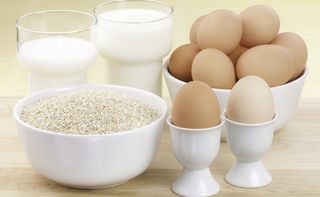
Women who don’t get enough vitamin D could develop brittle bones, or even worse, osteoporosis.
A study published in July in the New England Journal of Medicine found taking high doses (800 international units) of vitamin D daily could reduce the risk of hip fractures in older women by 30 percent.
There are three ways of getting vitamin D: from the skin, from your diet and from vitamin supplements.
Unfortunately, as the skin ages, it has less ability to produce vitamin D in response to sun exposure. But women can boost their vitamin D intake by consuming four 8-ounce servings of low-fat dairy products every day.
That would be equal to three glasses of either 1 percent or skim milk.
"Women don’t drink a lot of milk," Correa said. She recommend women take a multivitamin, eat low-fat yogurt or cottage cheese, and try hard cheese, vitamin D-fortified orange juice or legumes as part of a daily diet.
Vitamin D helps the body absorb calcium, which helps keep aging bones strong.
Calcium
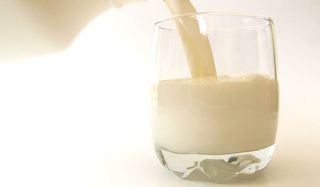
Calcium helps the body make new bone cells, and "as women approach menopause, the ability to make new bone cells decreases," Correa said. Drinking milk does not provide enough calcium to make up the difference, she said.
Correa recommended that in addition to eating calcium-rich dairy foods, older women should take 600 milligram calcium supplements twice a day.
The two main forms of calcium in supplements are calcium carbonate and calcium citrate. Calcium carbonate is inexpensive, but is absorbed best when taken with food, according to the National Institutes of Health. While calcium citrate is more expensive, it can be absorbed on an empty stomach.
Besides dairy products, calcium can also be found in tofu, cereals, soy and rice beverages, vegetables such as kale, broccoli and Chinese cabbage, and fish with soft bones such as sardines and salmon.
Omega-3 fatty acids
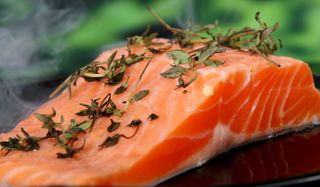
Eating a higher amount of fish and omega-3 fatty acids is linked with a lower risk of heart disease among women, according to a 2002 study published in the Journal of the American Medical Association.
Omega-3 fatty acids are a form of polyunsaturated fat. This healthy fat may also help slow down the growth of plaque buildup in the arteries and lowers blood pressure, according to the American Heart Association.
"Research has shown that omega-3 fatty acids canincrease the good cholesterol, and decrease the bad one," Correa said.
Several studies have found that fish oil supplements — about 1 to 4 grams per day — reduced triglyceride levels by 20 to 50 percent.
The AHA recommends eating fish — particularly fatty fish like salmon, tilapia or codfish — at least twice a week.
Olive oil, which contains monounsaturated fatty acids, has also shown health benefits.
Vitamin B12
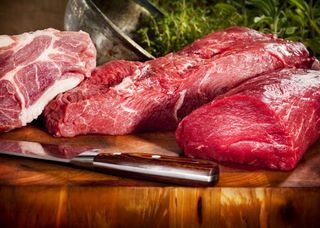
Postmenopausal women who lack certain nutrients in their diets, including vitamin B12, have an increased risk of becoming anemic, according to a recent study.
Researchers looked at nearly 73,000 postmenopausal women who participated in the nine-year Women's Health Initiative study. Among the women in the study, 5.5 percent were anemic. The researchers found that women with anemia tend to consume less protein, folate (also called vitamin B9), iron, vitamin C and vitamin B12.
Low levels of vitamin B12 tend to occur in women as they age. Older adults may not have enough hydrochloric acid in their stomach to absorb the vitamin.
Women who don’t get enough of B12 can experience fatigue, weight loss, poor memory, dementia and depression.
Although B12 has been suggested as a way to treat memory loss, boost mood and increase energy and concentration, there isn’t enough evidence to show that it improves these conditions.
The recommended daily amount of B12 is 2.4 micrograms daily for adults, and the vitamin can be found in foods such as fish, meat, poultry, eggs, milk and fortified breakfast cereals.
For women who are vegetarians or vegans, a supplement is often necessary. Correa said she recommends B12 injections, because they are the best way promote the body's absorption of the vitamin.
Folic Acid (Vitamin B9)
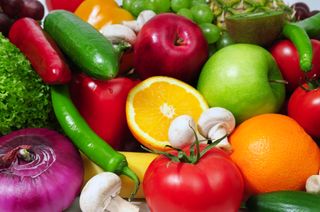
Although folic acid is perhaps best known as a vital nutrient for women to get during pregnancy, it’s also necessary for older women.
"Folic acid is cardio-protective, so it helps build new tissue," Correa said. "It’s helpful all around."
Folic acid, or folate, is a B-complex vitamin the body needs to create red blood cells.
Signs of low folic acid levels include anemia, weight loss, weakness, headaches and high levels of homocysteine in the blood, a risk factor for heart disease.
In fact, women who consume more folic acid have a reduced risk of developing high blood pressure, according to a 2005 study published in the Journal of the American Medical Association.
Researchers looked at nearly 94,000 women between ages 27 and 44, and about 62,000 women between ages 43 and 70 with no history of hypertension. The data were collected during the Nurses' Health Study.
The researchers compared women who consumed at least 1,000 micrograms of folic acid daily with those who consumed less than 200 micrograms daily.
They found that 12,347 of the older women had high blood pressure, and that those consuming the higher amount of folic acid were about 18 percent less likely to have the condition. In other words, there were about six fewer cases of hypertension per 1,000 women yearly among those consuming 1,000 micrograms of folic acid.
This doesn’t mean women should take 1,000 micrograms a day of folic acid, but they should try to take the recommended daily allowance of 400 micrograms, the researchers said.
Folic acid can be found in leafy green vegetables, citrus, squash, berries, nuts and olive oil.
Follow MyHealthNewsDaily on Twitter @MyHealth_MHND. Find us on Facebook.
Sign up for the Live Science daily newsletter now
Get the world’s most fascinating discoveries delivered straight to your inbox.
